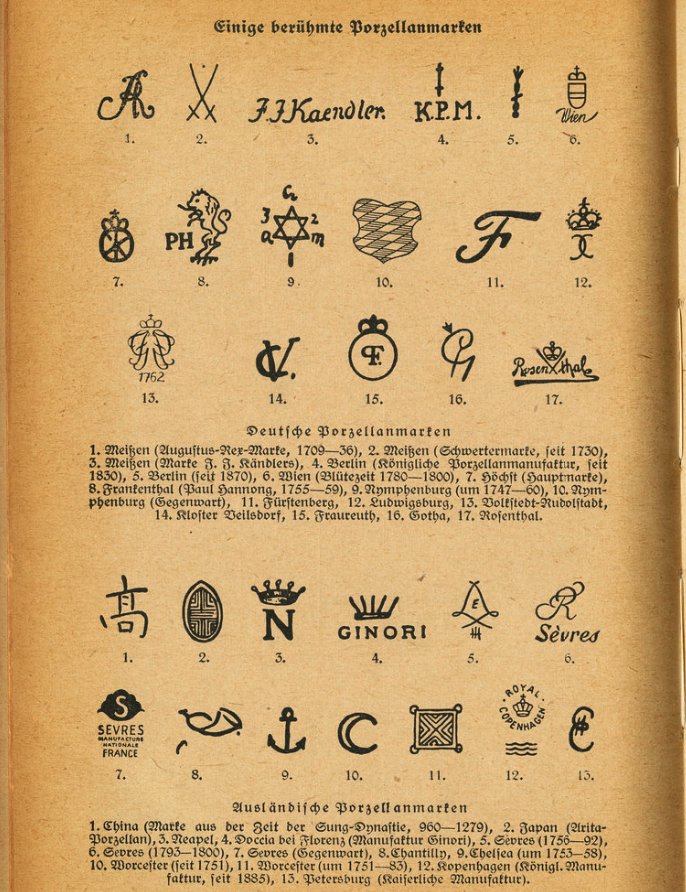Brands

From the 13th century onwards, the first porcelain pieces reached Europe by laborious routes through merchants and world travellers such as Marco Polo. The export porcelain of the Wan Li period became particularly famous here. From the Middle Ages onwards, Chinese porcelain was exported by royal houses to numerous countries around the world.
More or less successful attempts at imitation (Medici porcelain) preceded the invention of hard porcelain by J. F. Böttger and E. W. Graf von Tschirnhaus in Dresden. W. Graf von Tschirnhaus in Dresden. The founding of the first European manufactory in Meissen (1710, Meissener Porzellan®) was followed by manufactories in Vienna (1717), Höchst (1746), Nymphenburg (1747), Fürstenberg (1747), Berlin (1751), Frankenthal (1755) and Ludwigsburg (1758). After 1770, the European porcelain style was largely determined by the main manufactory in Sèvres in France. In the 18th and 19th centuries, the manufactories in England - in Chelsea, Derby, Worcester, Liverpool and Swansea - produced mainly soft porcelain. Copenhagen porcelain in turn had a great influence on Russian porcelain art, which experienced its heyday under Catherine II.
But also in Eastern Europe - in the area of today's western Poland - high-quality manufacturing plants for porcelain were established. In 1831, the Krister Porcelain Manufactory was founded, which after all belonged to the Rosenthal Consortium between the two world wars. Poland nationalised the manufactory. After that, mainly low-priced goods were produced there for export. As the "Krzysztof" porcelain factory, the factory with its relatively modern production facilities is still one of the important suppliers in the Waldenburg region.
